What Is The Beauty of Creating Subtle and Layered Visual Storytelling?
Park Chan-wook pulls out all of his best and most subtle filmmaking tools to make his most stunning film yet.
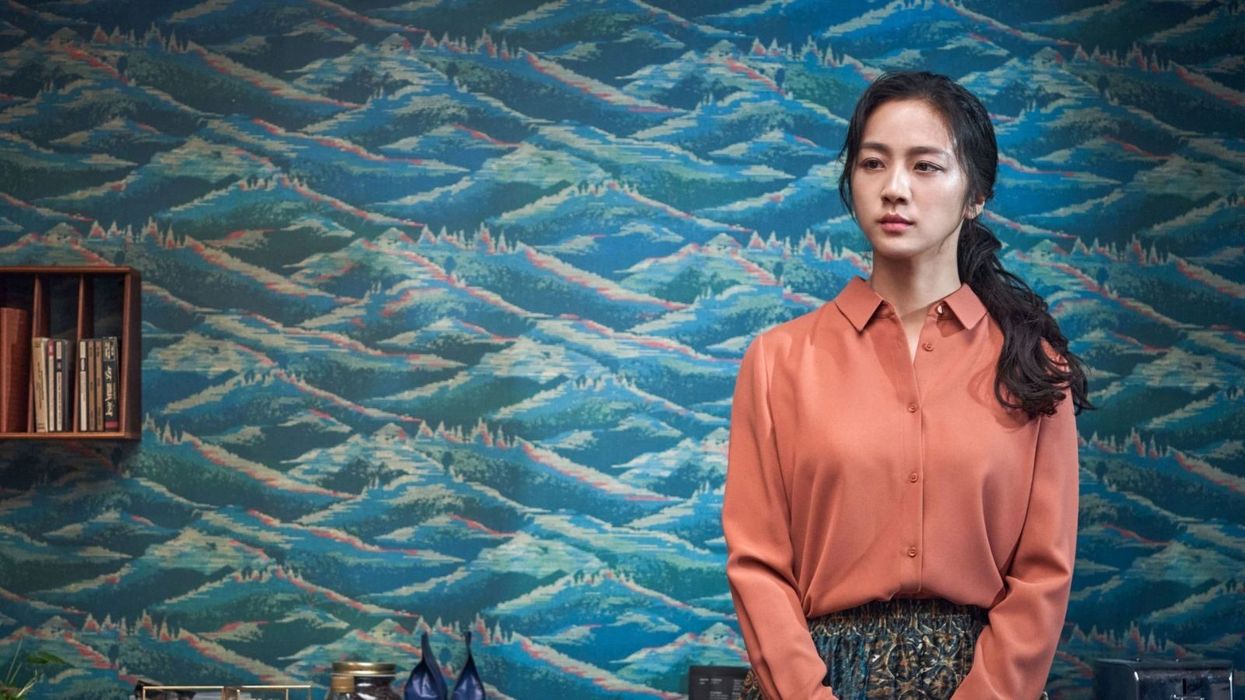
You may have seen Park Chan-wook’s new film Decision to Leave. The film tells the story of a detective who suspects a mysterious Chinese widow is a murderer that he inevitably falls in love with. The film is complex, quiet, and patient as the romance hijacks the attention of the film.
For those of you who have seen one of the best films of the year, you may want to watch it again after you check out Spikima Movies’ excellent video essay on the complex motifs that are layered throughout the Academy Award-shortlisted film. Ordinary moments have the potential to become the best shots of the film, subverting the audience’s expectations, but how?
Spikima walks us through how Chan-wook utilizes everything from plot to theme to the mundane conversations to send subtle messages of unforeseen revelations to the audience. It’s a truly comprehensive look at what Spikima aptly dubs, “Visual poetry.”
How does Chan-wook pull this off in Decision to Leave? Let’s dive in.
Making the Mundane Visually Interesting
During the scene in which Det. Jang Hae-jun (Park Hae-il) interrogates Song Seo-rae (Tang Wei) after the suspicious death of her husband, Chan-wook separates the visual interaction of what otherwise might become a boring, exposition scene. He does this by placing a mirror behind his characters, creating four sections in the frame that separates the two characters and their reflections.
Depending on which combination of characters and whose reflection is in focus, Chan-wook can convey visual messages to the audience about each character’s internal state. Watch carefully, and you’ll notice an entire arc playing out through the shifting focus, foreshadowing the conflicted relationship to come through masterful visual subtext.
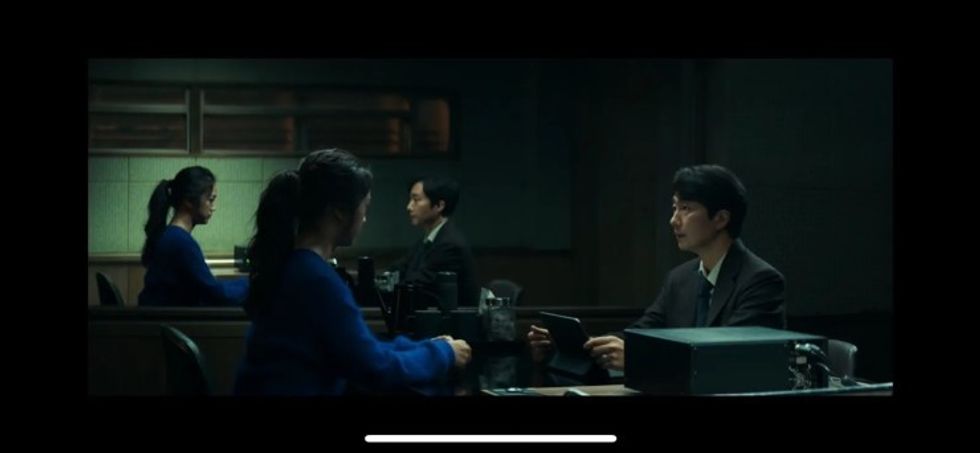
The drawing of the wave on the box is a foreshadowing of where the film’s last act will take place, and the orientation of the tubes illustrates how the characters are headed toward the same destination despite their differences.
Like me, you may have missed some of these subtleties on your first watch. You may wonder what is the point of such subtle visual cues if most people miss them.
As Spikima explains, the answer lies in Chan-wook’s dedication to the integrity of his story.
The filmmaker chooses style to serve the story’s core ideas, and here that core is obscurity. Every single scene appears to be a visualization of this concept, contradictions between the characters’ hearts and actions.
We see this in several examples throughout the film: obsession in the shape of a stakeout, private perspective stylized as a shared experience, and personal affections disguised as professionalism.
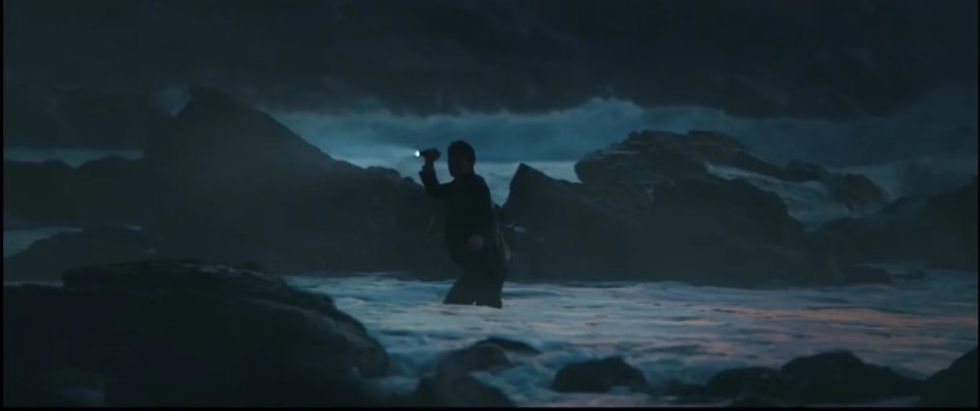
Leaning into Color Theory
One thing you likely did notice in the film are the ever-present shades of red, green, and blue. Chan-wook’s use of color hides subtle messages in plain sight.
These colors serve to show how the characters’ similarities and differences are like that of the mountain and the ocean. This is why the film’s most prevalent color is turquoise, a mix of green and blue, land and water. The color is often a symbol of friendship and a sense of peace.
Still, Hae-jun is often shrouded in green and Seo-rae in blue, and they cannot mix. The characters are represented throughout the film in such a way that what brings them together is also what separates them. They are drawn together, yet pushed apart by the very nature of the way they meet, as detectives and suspect.
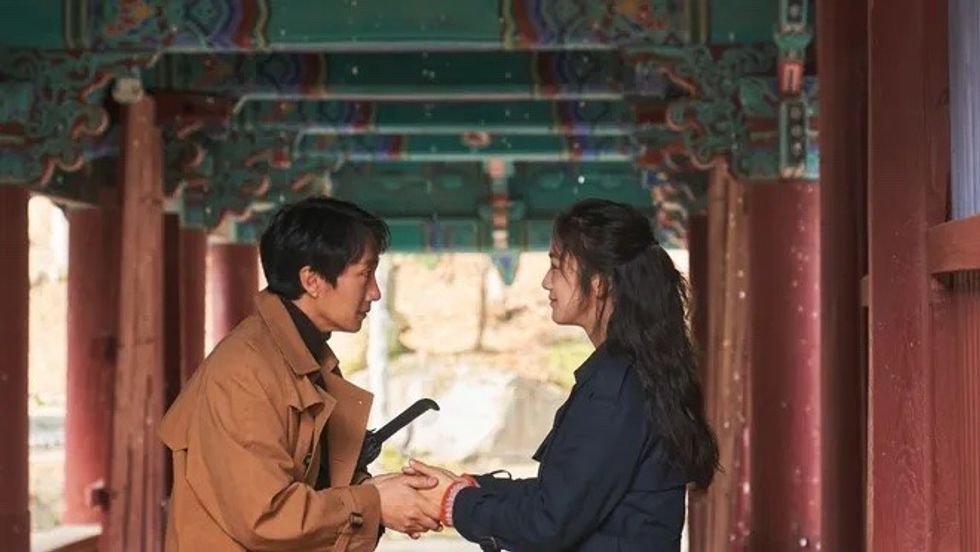
Giving the Camera Character
Perhaps the only objective perspective in the film comes from the vertical movements of the camera.
When Chan-wook moves the camera in an upward motion, he is often highlighting the struggle for resolution. A downward camera motion is when the film’s story falls into mystery. Hae-jun is a man of the mountain and Seo-rae is a woman of the water, so he slowly descends while she slowly ascends. The camera movements match this trajectory. Tragically, they miss each other and switch places. When Hae-jun’s love stops, Seo-rae's love begins.
The repetition of colors, actions, and words reminds the audience of the characters’ fixation, resemblance, and confession, while the ambiguity that resides within these same elements depicts their disconnection.
Decision to Leave intentionally hides important details from the audience because we are always following Hae-jun, a character who longs for clarity in life but stays blinded by love and suspicion. Chan-wook is forcing us to look for answers on screen that aren’t necessarily there, mimicking Hae-jun’s frustrations. However, it seems that clear answers are not what matters.
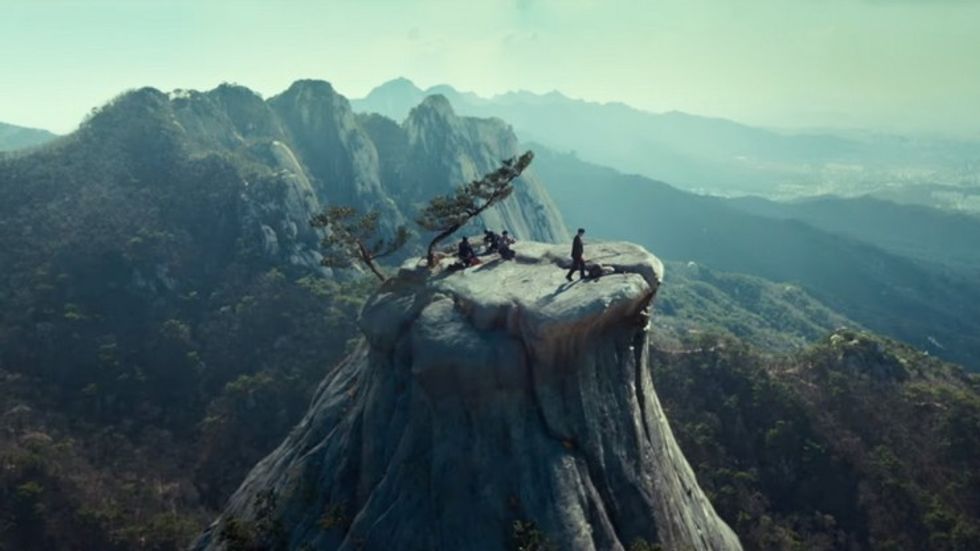
Maybe there is a part of him that relishes in the act of deciphering itself. He even keeps his unresolved cases up on a wall in his apartment. Once Seo-rae’s mystery is solved, Hae-jun’s love for her ceases.
What Hae-jun offers Sae-rae is a solution, which in his world is an expression of love. With his last gesture of love, he decides to leave as she decides to love. She later speaks his language back to him, throwing his problems into the ocean — her new husband’s phone, which holds the recording of Hae-jun’s confession — until she becomes the final problem.
The decision to leave was never meant to be fulfilled. It was just another phrase for a wish to stay. In that sense, Chan-wook’s ultimate misdirect is that there was never really a decision to be made in the first place.
Let us know in the comments what other misdirects and subtitles you’ve found in Decision to Leave.
Source: Spikima Movies











